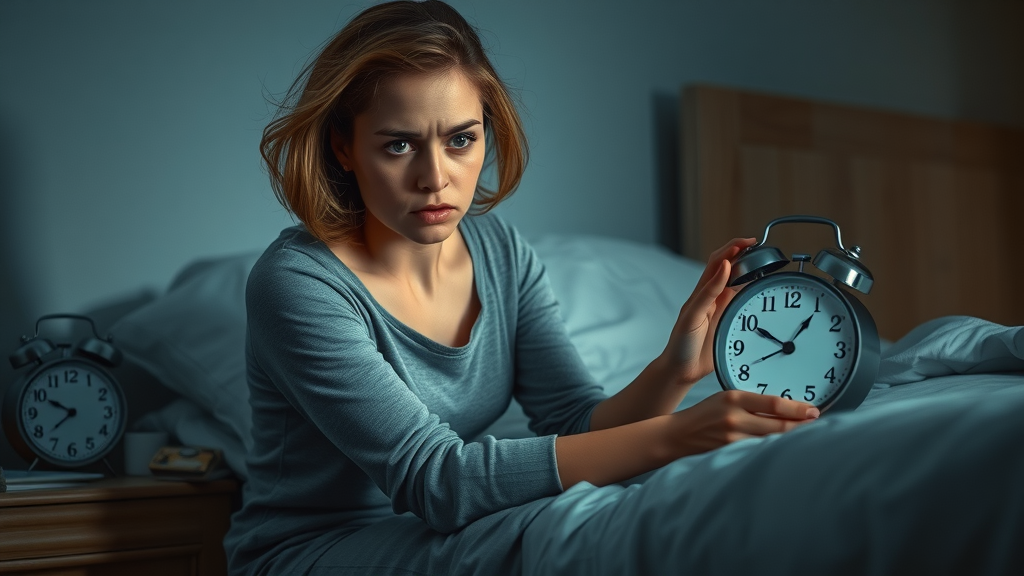Did you know? Women who routinely sleep less than six hours a night are at a 70% higher risk of major health problems, compared to those who get seven to nine hours. Sleep and wellness are not just intertwined—they’re inseparable. Discover how your nightly rest is the secret to powering your body, your mind, and your future success.
Startling Facts: The Powerful Connection Between Sleep and Wellness for Women
Every woman’s journey to wellness starts with a good night’s sleep. Science reveals that sleep and wellness are intimately linked for women—often more than for men. Quality sleep supports a robust immune system, hormonal regulation, mental health, and even your risk of disease. Studies show that chronic lack of sleep in women is associated with an increased risk of heart attack, mood swings, weight gain, and even car crash injuries due to fatigue-driven errors. Many women experience challenges like hormonal shifts, high stress, and busy schedules that make sleep problems and sleep disorders more common. By recognizing and addressing these issues, you take proactive steps toward a healthier, more vibrant life.
Unlocking the full potential of your wellness journey starts with prioritizing rest. This guide offers actionable strategies, practical tips, and the answers every woman needs to reclaim the magic of sleep, recharging energy and spirit alike.

- How sleep and wellness are uniquely connected for women
- Common sleep disorders impacting women
- Science-backed causes and solutions for sleep problems
- Expert advice and actionable wellness tips to treat sleep issues
- Discover the 3 3 3 rule for sleep and other sleep expert insights
- The life-changing benefits of prioritizing restful nights
What Does 'Sleep and Wellness' Truly Mean for Women?
Defining Sleep and Wellness in the Context of Modern Women
Modern women wear many hats—professionals, mothers, caregivers, friends—and in the midst of these demands, sleep and wellness often take a back seat. However, redefining wellness to put sleep at the forefront changes everything. For women, wellness is far more than the absence of illness; it’s a delicate balance of physical vitality, emotional resilience, and mental clarity, all of which depend on quality sleep. Unlike “burning the midnight oil,” prioritizing sleep is the cornerstone of optimizing productivity and emotional well-being. Leading sleep experts have found that women’s bodies respond uniquely to restful nights, with improved memory, mood, immune function, and even metabolic rates. By understanding these dynamics, women can reclaim sleep as the ultimate act of self-care, empowering not just recovery but daily flourishing.
How Sleep and Wellness Impacts Your Mental Health
A woman’s mental health hinges on the foundation of sleep. Restorative sleep—particularly deep sleep—directly affects hormone regulation, stress resilience, and emotional processing. Studies consistently link chronic sleep deprivation in women to anxiety, depression, and cognitive fog. The connection between sleep and wellness is particularly apparent in how the brain repairs itself overnight, consolidates memories, and regulates mood. When women sleep less, not only do stress hormones increase, but also the risk for more severe health problems escalates. Addressing sleep isn’t just about avoiding tiredness; it’s about building a more emotionally resilient self, equipped to meet life’s demands with clarity and positivity.
“Prioritizing sleep is the ultimate act of self-love for the modern woman.” — Renowned Sleep Expert
How Sleep is Directly Related to Women’s Wellness
Understanding the Link: Sleep and Wellness in Daily Life
So, how does sleep shape your daily wellness? For women, sleep isn’t just a passive state—it’s an active process that regulates every system in the body. When you get quality sleep, your immune system strengthens, lowering the chance of frequent illness. Your hormones rebalance, supporting everything from menstruation and fertility to thyroid function and appetite control. The tie between sleep and wellness means your mornings start with more energy, clearer thinking, and better relationships. On the other hand, unaddressed sleep problems erode this foundation, leading to frequent irritability, trouble focusing, and increased vulnerability to stress. Even minor sleep disorders like insomnia or sleep apnea, often overlooked, can profoundly impact women’s quality of life and long-term health. Recognizing the signs and addressing sleep issues early can revolutionize a woman’s sense of vitality and achievement.

The Science Behind Sleep and Wellness
The science is clear—women experience sleep cycles and disruptions differently. Research reveals that hormonal changes during the menstrual cycle, pregnancy, and menopause can significantly alter sleep patterns. During deep sleep, growth hormone released repairs cells and bolsters the immune system. Disrupted or inadequate sleep, on the other hand, triggers elevations in stress hormones like cortisol, leading to difficulties in weight management, increased traffic accident risk (including car crashes), and a weakened immune system. Sleep disorders such as obstructive sleep apnea are underestimated in women due to subtle symptoms, yet contribute to increased risk of heart attack, diabetes, and mood disorders. Understanding scientific insights allows women to make targeted changes, advocate for themselves with healthcare providers and recognize when to seek help from a sleep expert or sleep center for tailored solutions.
Common Sleep Problems Impacting Women
Identifying Sleep Disorders That Affect Women
Women face a unique set of sleep problems, often influenced by hormonal changes, caregiving roles, or high stress. The most common sleep disorders among women include insomnia, obstructive sleep apnea, restless leg syndrome, and circadian rhythm disorders. Insomnia—difficulty falling or staying asleep—is more prevalent in women, often tied to anxiety or hormonal fluctuations during perimenopause and menopause. Obstructive sleep apnea is frequently underdiagnosed in women because its symptoms (like fatigue, headaches or mild depression) can be mistaken for other health issues. Recognizing sleep disorder patterns—such as snoring, gasping for air, or chronic restlessness—helps women know when to seek professional help. Early diagnosis can prevent a cascade of health concerns from high blood pressure to poor memory and even mood disorders.

Recognizing Signs of Sleep Problems and Untreated Sleep Issues
It’s not just about being tired. Consistent trouble falling asleep, waking up frequently throughout the night, or feeling unrested after a full night’s sleep can signal an untreated sleep disorder. Other warning signs include excessive daytime sleepiness, difficulty concentrating, irritability, and even morning headaches. Women with untreated sleep problems are at higher risk for chronic health conditions such as hypertension, diabetes, and a weakened immune system. Don’t underestimate the effects—chronic sleep issues have been linked to an increased risk of heart attack and a greater likelihood of accidents, like car crashes, due to reduced alertness. Recognizing these signals is the first step in taking control of your health, and seeking assessment from a sleep physician, nurse practitioner, or physician assistant at a medical city sleep center can change the course of your wellness journey.
Top Causes of Sleep Disorders Among Women
Hormonal Shifts and Sleep Disorder Risks
Hormonal changes are powerful drivers behind women’s sleep disorders. Menstrual cycles, pregnancy, and especially perimenopause and menopause can disturb sleep by causing night sweats, hot flashes, and body temperature fluctuations. Progesterone and estrogen play significant roles in regulating sleep cycles; when their levels drop, sleep becomes lighter or more fragmented, leading to increased incidents of insomnia or restless leg syndrome. Conversely, pregnancy may bring about sleep-disordered breathing or intensify pre-existing sleep problems. Understanding your body’s natural rhythms—and how they shift as you age—can help you take proactive, individualized steps to support your wellness.
Lifestyle Factors That Contribute to Sleep Disorders and Sleep Problems
Beyond biology, lifestyle choices also heavily influence sleep. High stress, irregular sleep schedules, excessive screen time, lack of exercise, and late-night caffeine all compound to create or worsen sleep problems. Many women juggle jobs, families, and social lives—leaving self-care, including sleep, neglected. Research indicates that even moderate alcohol intake, work-related anxiety, or exposure to blue light before bedtime raise the risk for insomnia and other sleep disorders. Positive lifestyle adjustments—such as establishing a calming bedtime routine, prioritizing nightly wind-down activities, and physical movement throughout the day—can help relieve some hormonal and lifestyle pressures, fostering restorative sleep and enhanced wellness.

Spotlight on Women's Health: Sleep Apnea and Restless Leg Syndrome
What Is Sleep Apnea and Obstructive Sleep Apnea?
Sleep apnea—especially obstructive sleep apnea—occurs when breathing pauses repeatedly during sleep, often due to relaxation of throat muscles or obstruction within the nasal or throat cavity. Many women experience subtler symptoms than men, such as persistent fatigue, morning headaches, or mood changes instead of the expected loud snoring. Untreated sleep apnea is associated with a drastically increased risk of heart attack, diabetes, and even car crashes stemming from impaired alertness. Recognizing the potential for obstructive sleep apnea is crucial in taking action—if you’re experiencing unexplained tiredness with any irregular breathing at night, it may be time for a sleep consult with your healthcare provider.
Diagnosing and Treating Sleep Apnea in Women
Women often go undiagnosed for sleep apnea because symptoms may differ from those in men. The diagnosis usually involves overnight monitoring in a sleep center, measuring breathing patterns, oxygen levels, and sleep cycles. Treatments may include CPAP devices that gently keep the airways open, oral appliances designed by a sleep dentist to reposition the jaw slightly forward, or in some cases, surgical solutions for severe airway obstructions. Lifestyle modifications—like weight loss, regular exercise, and improved sleep hygiene—can substantially improve symptoms. For many women, coordinating care with a sleep expert, physician assistant, or nurse practitioner ensures an individualized, sustainable plan for better sleep and health.
Restless Leg Syndrome: Symptoms and Solutions
Restless leg syndrome (RLS) creates uncomfortable urges to move the legs, most commonly at night, disrupting both sleep and wellness. Symptoms can include tingling, crawling, or aching sensations that make it difficult to fall or stay asleep—leading to persistent tiredness, mood problems, and difficulty concentrating. The causes of leg syndrome range from genetics and hormonal shifts to iron deficiency or certain medications. Women, especially during pregnancy and menopause, are at increased risk. Treatment options for RLS or restless leg generally include lifestyle changes like regular exercise, reduced caffeine, and sometimes medication to balance dopamine or iron levels. Early intervention with a sleep physician or sleep expert can help quickly restore nightly rest.
Managing Leg Syndrome and Other Restless Leg Concerns
Managing restless leg syndrome and similar conditions starts with identifying triggers—such as periods of inactivity, stress, or nutritional deficiencies. Regular stretching, massage, and establishing consistent bedtime rituals can mitigate symptoms for many women. For more persistent cases, working closely with healthcare professionals is critical. Many women benefit from a multidisciplinary approach involving a sleep dentist for oral appliance therapy, behavioral therapy for sleep anxiety, and regular follow-ups with their sleep center. Addressing even mild sleep problems before they escalate preserves quality of life and ensures women wake up recharged, rather than worn down by restless nights.
Calling in the Sleep Expert: Professional Advice for Women's Sleep and Wellness
“Even mild sleep problems can cascade into serious health problems—and the risks are different for women.”
A true breakthrough in sleep and wellness often comes from consulting with a professional. Sleep experts—whether sleep physicians, nurse practitioners, or physician assistants working in a reputable sleep center—understand the distinct needs of women when it comes to diagnosing and managing sleep disorders. These providers offer sleep consults to navigate complex cases, monitor ongoing treatment for sleep apnea, and help establish routines that nurture restful nights. Crucially, they craft personalized plans that address both biological and lifestyle contributors unique to women. By seeking professional guidance, every woman can tap into tailored strategies, evidence-based care, and ongoing support to not just treat sleep problems but thrive in every aspect of wellness.
Wellness Tips for Women: How to Treat Sleep Problems and Improve Wellness
- Establish a sleep schedule—wake up and go to sleep at consistent times every day.
- Create a calming pre-bedtime ritual such as reading, meditation, or soft music to wind down.
- Limit caffeine, alcohol, and high-sugar snacks in the evenings to prevent restlessness and sleep problems.
- Avoid screens for at least 30 minutes before bed to help your brain transition to sleep mode.
- Keep your bedroom cool, quiet, and dark for optimal sleep.
- Incorporate gentle exercise or stretching earlier in the day to reduce stress and promote restful sleep.
- Address anxiety with journaling, deep breathing, or guided relaxation exercises.
- Schedule regular check-ups with a sleep expert if you experience ongoing sleep issues.
- Try the 3 3 3 rule for sleep for quick, calming bedtime resets (see below for details).
The 3 3 3 Rule for Sleep: What It Is & How Women Can Use It
The 3 3 3 rule for sleep offers an easy-to-remember strategy to calm bedtime anxiety and reset your mind for deeper rest. When struggling to fall asleep, focus your attention on:
1. Three things you can see. Gently open your eyes and list these objects—this redirects your thoughts away from worries.
2. Three things you can hear. Tune in to subtle sounds—perhaps a ticking clock, soft music, or your own breathing—to ground yourself in the present moment.
3. Three parts of your body you can move. Tense and relax each area—maybe your toes, fingers, or shoulders. This gentle movement calms your nervous system and shifts your mind’s focus.
This simple method, rooted in cognitive behavioral therapy, encourages mindful awareness and disrupts spiraling anxious thoughts, making it easier for women to drift into restful, restorative sleep and uplift their wellness.

| Sleep Disorder | Causes | Symptoms | Treatment Options |
|---|---|---|---|
| Insomnia | Stress, anxiety, hormonal shifts, poor sleep hygiene | Difficulty falling/staying asleep, fatigue, mood swings | Behavioral therapy, sleep schedule, relaxation techniques |
| Obstructive Sleep Apnea | Relaxed throat muscles, family history, weight gain, menopause | Loud snoring, daytime fatigue, morning headaches | CPAP device, oral appliance from sleep dentist, lifestyle changes |
| Restless Leg Syndrome | Genetic, hormonal changes, iron deficiency | Urge to move legs, tingling at night | Iron supplements, exercise, medication, sleep expert |
| Circadian Rhythm Disorders | Irregular sleep schedule, shift work, jet lag | Drowsiness at odd hours, sleep difficulty | Consistent bedtime, light therapy, behavioral therapy |
Life Upgrades: Long-Term Benefits of Prioritizing Sleep and Wellness
How Improved Sleep and Wellness Transforms Women’s Lives
Committing to sleep pays enormous dividends for women. Regular, restorative sleep supercharges your energy levels, reduces stress, and sharpens focus throughout the day. Over time, prioritizing sleep can boost your immune system, reduce cravings and emotional eating, lower the risk of chronic health problems like heart disease, and steady hormone balances essential for reproductive health and mood. Women who adopt wellness tips for sleep report improved relationships, greater productivity, and a more optimistic outlook. Ultimately, sleep and wellness add up to more vibrant mornings and the ability to show up fully for every role you embrace.

People Also Ask: How is Sleep Related to Wellness?
Comprehensive Answer: How Sleep Relates to Wellness for Women
Sleep and wellness for women are fundamentally connected. Good sleep repairs body tissues, supports hormonal balance, strengthens your immune system, and maintains mental clarity. Without adequate rest, women are more susceptible to mood disturbances, weight gain, weakened immunity, and even serious health issues like cardiovascular disease. Healthy sleep is restorative, allowing you to tackle each day with renewed energy and focus while reducing risks for chronic conditions.
People Also Ask: What is the 3 3 3 Rule for Sleep?
In-Depth Answer: The 3 3 3 Rule for Sleep in Women’s Wellness
The 3 3 3 rule for sleep is a quick mindfulness technique to help calm nighttime anxiety and reset your mind for restful sleep. If you’re struggling in bed, simply notice three things you can see, three sounds you can hear, and move three parts of your body. This process interrupts racing thoughts and grounds you in the present, making it especially effective for women experiencing stress, hormonal changes, or sleep problems. Incorporating this rule into your nightly routine can transform your approach to relaxation and wellness.
People Also Ask: What Does Sleep Wellness Mean?
Detailed Answer: The Meaning and Application of Sleep Wellness for Women
Sleep wellness means cultivating consistent, high-quality sleep as a non-negotiable part of total health and self-care. For women, this involves managing stress, balancing hormones, and maintaining bedtime habits that support true rest. Sleep wellness is about more than just hours logged—it’s about ensuring that your sleep is restorative, supports your goals, and enables you to live your life with confidence and joy. Women who prioritize sleep wellness report greater vitality, sharper thinking, and deeper satisfaction in all life areas.
People Also Ask: What are Wellness Tips for Sleep?
Thorough Answer: Wellness Tips for Sleep Specific to Women
Wellness tips for better sleep include establishing a regular bedtime routine, keeping your bedroom environment cool and quiet, and avoiding large meals or caffeine late at night. Women should also address stress proactively—through meditation, journaling, or seeking guidance from a sleep expert if persistent sleep disorder symptoms occur. Finally, paying attention to hormonal cycles and adapting sleeping patterns accordingly can greatly improve nightly rest and wellness.
FAQs About Sleep and Wellness for Women
Frequently Asked Questions on Sleep and Wellness
-
Why do women experience more sleep problems than men?
Hormonal changes throughout women’s life stages—puberty, menstruation, pregnancy, perimenopause, and menopause—cause sleep disturbances that men often don’t face. Added stress from caregiving roles and busy schedules can also contribute to women’s sleep disorders. -
What is obstructive sleep apnea and how does it affect women?
Obstructive sleep apnea occurs when the airway collapses or becomes blocked during sleep, causing breathing pauses. Women may not always snore but often feel tired, have headaches, or experience mood changes. Left untreated, it raises the risk of heart problems and cognitive decline. -
Can treating sleep disorders improve mental health?
Absolutely. Addressing sleep disorders not only restores physical health but also improves mood, reduces anxiety and depression, and enhances overall well-being for women. -
When should I see a sleep expert?
If you suffer from persistent insomnia, excessive daytime sleepiness, or suspect you have sleep apnea or restless leg syndrome, consult a sleep expert or your healthcare provider. Prompt evaluation can prevent mild problems from turning into chronic health risks.
Key Takeaways: The Essential Guide to Sleep and Wellness for Women
- Prioritizing sleep is a foundational act of self-care and a gateway to vibrant wellness for women.
- Recognize and address common sleep disorders like insomnia, sleep apnea, and restless leg syndrome early.
- Hormonal and lifestyle factors both play significant roles in women’s sleep health.
- Utilize sleep expert strategies like the 3 3 3 rule for better rest and overall well-being.
- Professional guidance from sleep centers and wellness tips can make a life-changing difference.
Ready to recharge? Subscribe for more strategies on how to be a successful woman in every area of your life: http://spotlightonyoursuccess.com
Conclusion: Your Path to Renewed Sleep and Wellness
Prioritize sleep, embrace wellness, and claim your power—because a well-rested woman is unstoppable. Make restful nights your superpower today.
 Add Row
Add Row  Add
Add 




Write A Comment